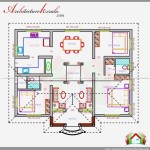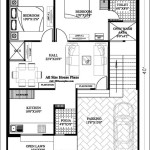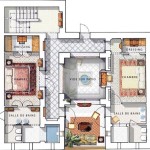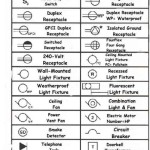How to Master Home Floor Plan Design
Designing a home floor plan is a crucial step in the homebuilding process that demands meticulous planning and attention to detail. A well-designed floor plan lays the foundation for a functional, comfortable, and aesthetically pleasing living space. Here's a comprehensive guide to help you create an exceptional home floor plan:
1. Determine Your Needs and Lifestyle
Start by assessing your family's needs and lifestyle. Consider how many bedrooms and bathrooms are necessary, as well as the desired flow and layout of the home. Think about the types of activities you and your family engage in, and design spaces that cater to those needs.
2. Establish a Functional Layout
The layout should prioritize functionality and ease of movement. Position the main living areas, such as the kitchen, living room, and dining room, adjacent to each other to create a natural flow. Ensure there are ample hallways and transition spaces to avoid congestion.
3. Consider Natural Light and Ventilation
Maximize natural light by incorporating large windows and skylights in key areas of the home. Proper ventilation is also essential for a healthy indoor environment. Plan for windows and doors in strategic locations to promote cross-ventilation and reduce the need for artificial lighting and ventilation systems.
4. Optimize Space Utilization
Make the most of every square foot by designing efficient storage solutions. Utilize built-in cabinetry, closets, and storage benches to keep clutter at bay. Consider multi-purpose spaces, such as a kitchen island that also serves as a breakfast bar, to maximize functionality.
5. Incorporate Aesthetic Elements
Beyond functionality, don't overlook the aesthetic appeal of your floor plan. Choose finishes and materials that complement each other and create a cohesive design scheme. Consider the overall style of your home and select elements that enhance the desired ambiance.
6. Seek Professional Advice
If you lack experience in home design, consider consulting an architect or interior designer. Professionals can provide valuable insights, help you avoid costly mistakes, and ensure your floor plan meets all necessary building codes and regulations.
7. Use Home Design Software
There are numerous home design software programs available that can assist with the design process. These tools allow you to experiment with different layouts, view 3D renderings, and make adjustments in real-time. They can be particularly beneficial for those with minimal design experience.
By following these essential aspects, you can create a home floor plan that not only meets your practical needs but also enhances your lifestyle and creates a welcoming and beautiful living space.

House Plans How To Design Your Home Plan

Floor Plans Types Symbols Examples

House Plans How To Design Your Home Plan

Floor Plan Creator And Designer Free Easy App

House Plans How To Design Your Home Plan

Tips For Selecting The Right Floor Plan Your Home Sater Design Collection

House Floor Plans Your Best Guide To Home Layout Ideas

Floor Plans How To Design The Perfect Layout Cherished Bliss

Floor Plans Learn How To Design And Plan

Design The Perfect Home Floor Plan With Tips From A Professional








